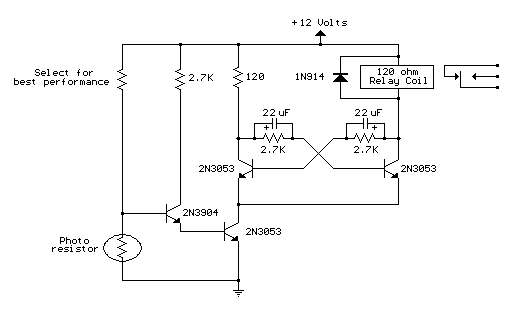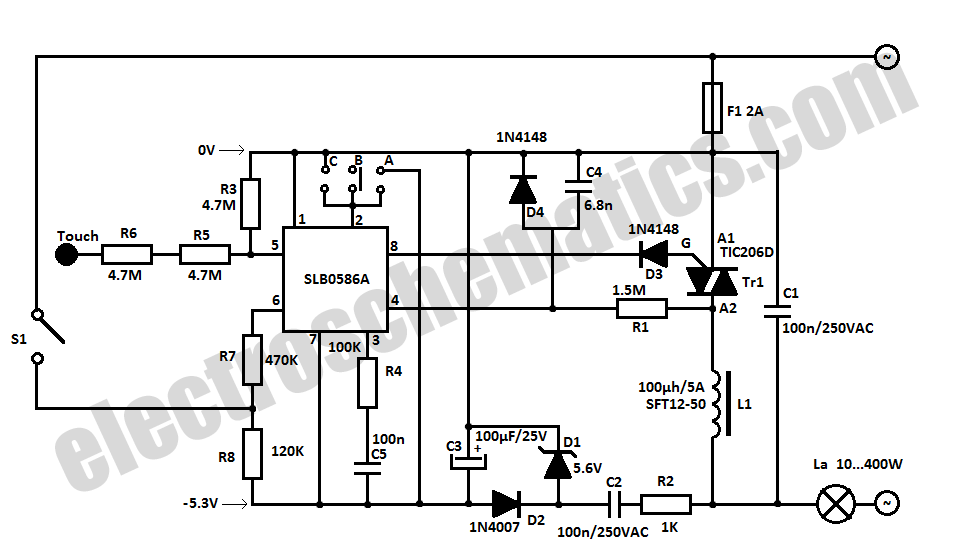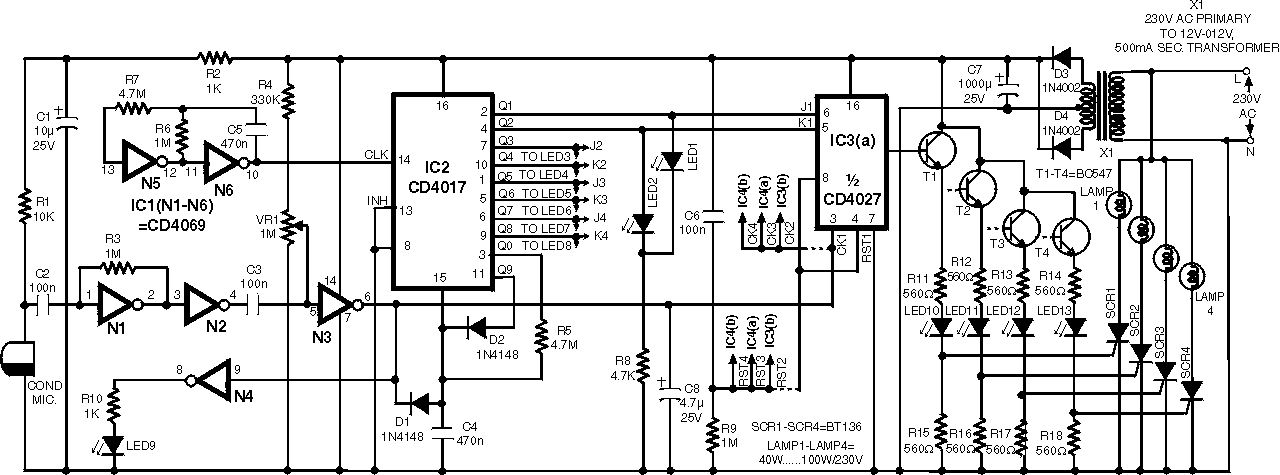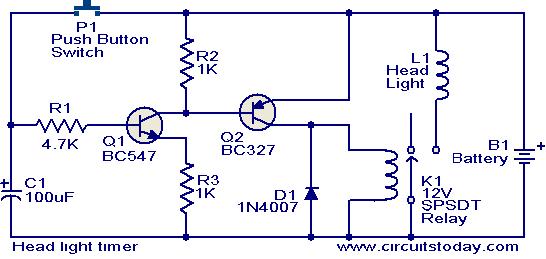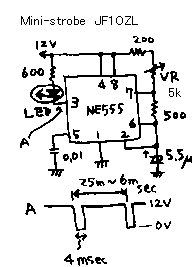
Light Activated SwitchCircuit Based On The LM311 IC

The following circuit illustrates a Light Activated Switch Circuit Diagram. This circuit is based on the LM311 integrated circuit, which functions as a voltage comparator.
The Light Activated Switch Circuit utilizes the LM311 voltage comparator to control the switching of a load based on ambient light levels. The circuit typically consists of a photodiode or phototransistor that detects light intensity. When the light level exceeds a predetermined threshold, the output of the LM311 changes state, activating a relay or transistor that controls the load.
In this configuration, the photodiode is connected to the inverting input of the LM311, while a reference voltage is applied to the non-inverting input. The reference voltage can be adjusted using a potentiometer, allowing for fine-tuning of the light sensitivity. When the light intensity surpasses the reference voltage, the LM311 output transitions from low to high, which can be used to drive a relay or transistor, thereby switching on the connected load.
The circuit may also include additional components such as resistors for current limiting and capacitors for noise filtering. Proper layout and component selection are crucial for ensuring the circuit's responsiveness to light changes and minimizing false triggering from ambient light fluctuations. This type of circuit is commonly employed in applications such as automatic street lighting, garden lights, and other systems that require light-sensitive control.The following circuit shows about Light Activated Switch Circuit Diagram. This circuit based on the LM311 IC Features: voltage comparator circuit .. 🔗 External reference
The Light Activated Switch Circuit utilizes the LM311 voltage comparator to control the switching of a load based on ambient light levels. The circuit typically consists of a photodiode or phototransistor that detects light intensity. When the light level exceeds a predetermined threshold, the output of the LM311 changes state, activating a relay or transistor that controls the load.
In this configuration, the photodiode is connected to the inverting input of the LM311, while a reference voltage is applied to the non-inverting input. The reference voltage can be adjusted using a potentiometer, allowing for fine-tuning of the light sensitivity. When the light intensity surpasses the reference voltage, the LM311 output transitions from low to high, which can be used to drive a relay or transistor, thereby switching on the connected load.
The circuit may also include additional components such as resistors for current limiting and capacitors for noise filtering. Proper layout and component selection are crucial for ensuring the circuit's responsiveness to light changes and minimizing false triggering from ambient light fluctuations. This type of circuit is commonly employed in applications such as automatic street lighting, garden lights, and other systems that require light-sensitive control.The following circuit shows about Light Activated Switch Circuit Diagram. This circuit based on the LM311 IC Features: voltage comparator circuit .. 🔗 External reference
